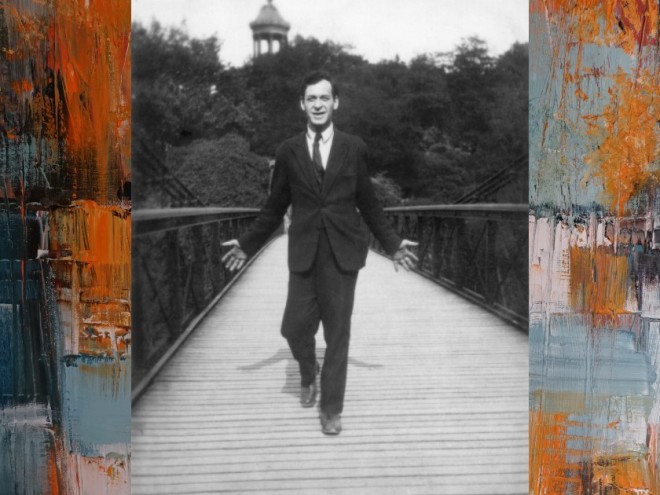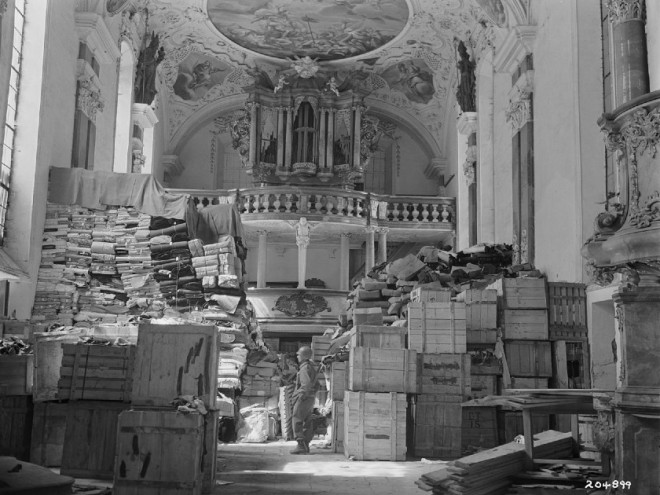The stories of the Nazis’ lust for fine art during World War II most often revolves around the pillaging of personal and private collections and subsequent efforts at restitution. Perhaps the most publicized instance of looted art is that of Gustav Klimt’s commissioned portrait of Adele Bloch-Bauer, a tour de force of jewel-like color and elaborate patterning. The 2015 movie Woman in Gold chronicled Maria Altman’s protracted and ultimately successful legal effort to recover this icon-like portrait of her aunt from the Austrian government.
Restitution on a much grander scale was the subject of a star-studded 2014 film, starring George Clooney and Matt Damon, dramatizing the efforts of The Monuments, Fine Arts, and Archives Program established by the Allied armies — informally known as the Monuments Men. This vast undertaking required the identification and discovery of nearly five million plundered objects throughout Europe.
Yet, there is another story to tell among this intriguing but oft-rehearsed narrative, a prologue of sorts, and Charles Dellheim’s book Belonging and Betrayal deftly does just that. Dellheim trains his eye on a surprisingly large and influential number of pre-war Jewish dealers, connoisseurs, and collectors of art, and later the fate of their collections, which ranged from Old Masters to avant-garde conceptions. For example, Paul Cassirer boldly introduced the French Impressionists to Germans, and he heavily promoted the unappreciated Vincent Van Gogh in Berlin. Internationally renowned, Paul Rosenberg represented and championed Pablo Picasso, with right of first refusal for his work (Paul’s brother Léonce was also a leading gallerist). In 1940, forced to flee after the Nazi invasion of Paris, Rosenberg left approximately four hundred works behind. Settled in New York City, after the war Rosenberg dedicated much energy to recovering his confiscated property (he reclaimed over three hundred works).
Side by side his chronicle of these world-class cultural brokers, Dellheim attributes the prominence of Jews as arbiters and collectors of art to the desire to find a place in the world at large, and art — they believed — was a means to respectability. That is to say, in addition to narrating the vast contribution of Jews to the early twentieth-century art world, Dellheim explores the Jewish assimilation experience.
Not only did Jewish owners of art earn Hitler’s scorn, so did some of the artists; makers of avant-garde were dubbed “degenerate” by the Nazis and hence their art was targeted as much as the Jewish proprietors who advocated for them. Modernist artists and Jews were both outsiders trying to break in.
Dellheim’s book transcends typical university press publications. The volume is an enjoyable, breezy read that intertwines the fortunes and fate of a host of colorful figures who changed the art world, as well as the devastating betrayal of some of its very best.
Samantha Baskind is Distinguished Professor of Art History at Cleveland State University. She is the author or editor of six books on Jewish American art and culture, which address subjects ranging from fine art to film to comics and graphic novels. She served as editor for U.S. art for the 22-volume revised edition of the Encyclopaedia Judaica and is currently series editor of Dimyonot: Jews and the Cultural Imagination, published by Penn State University Press.





